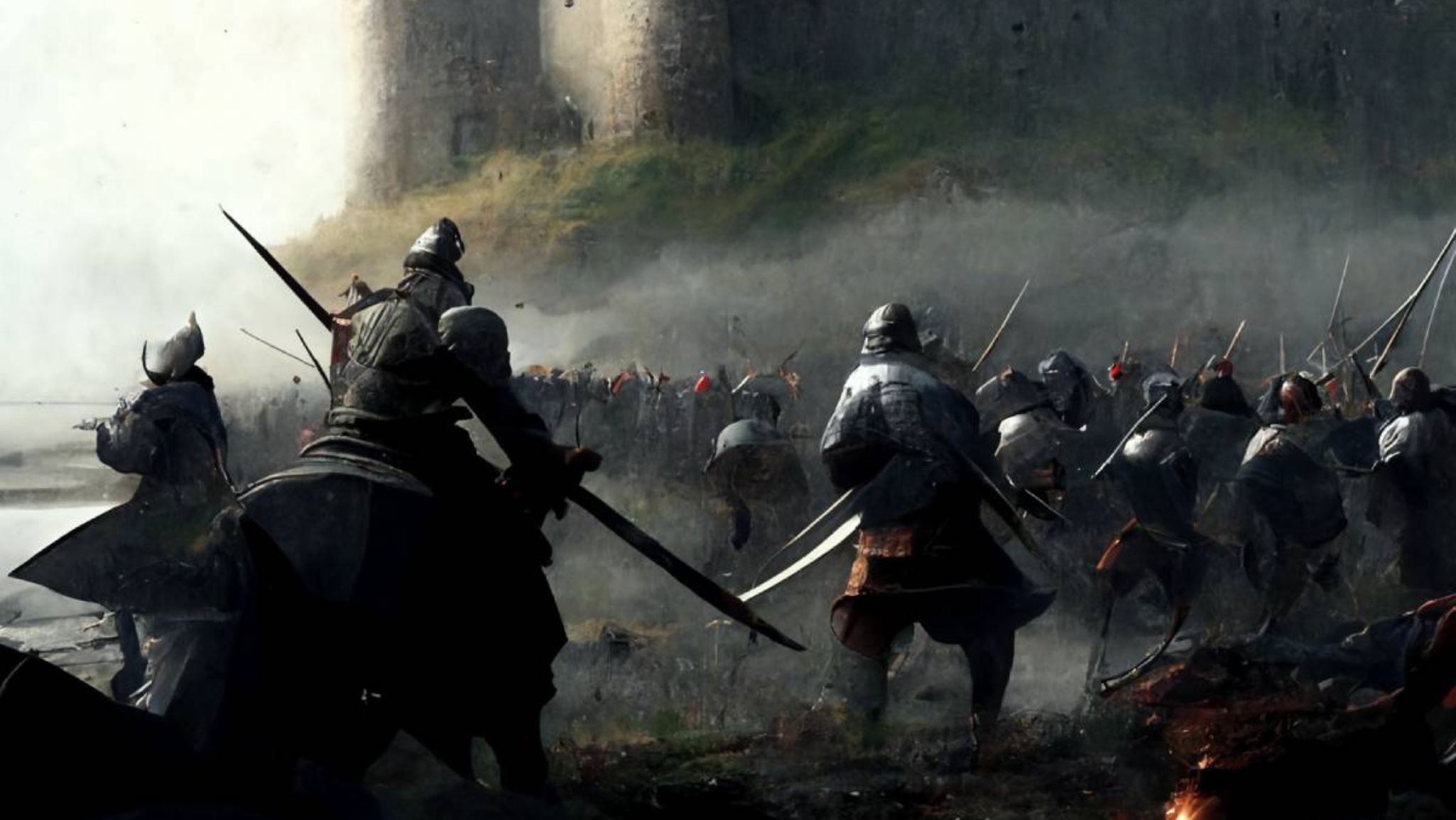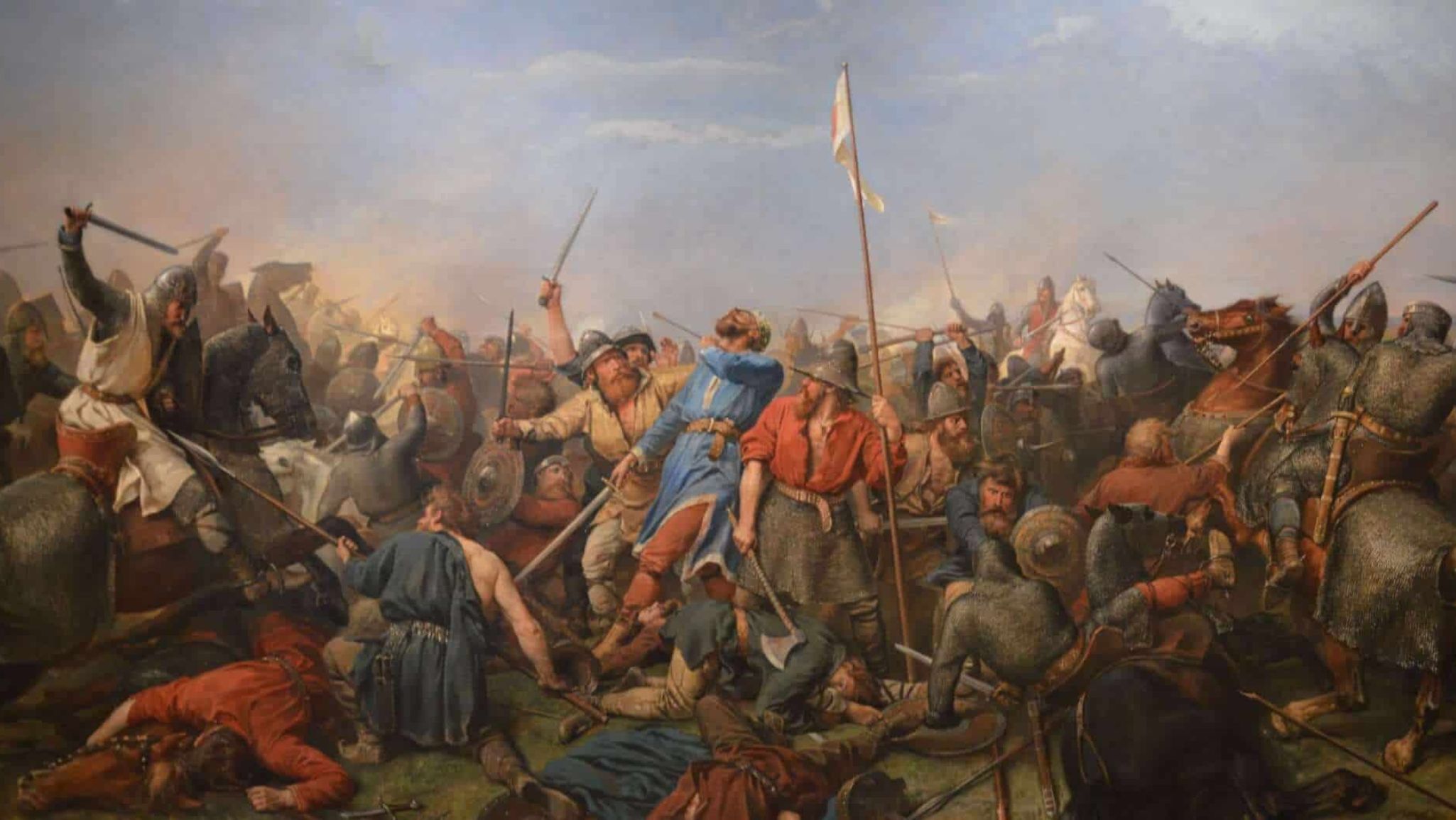The Battle of Brunanburh was a pivotal moment in British history. Fought in 937 AD, it marked a fierce clash between the Anglo-Saxons and a coalition of Viking forces. This battle not only showcased the military prowess of King Athelstan but also solidified the unity of England. Its significance extends beyond the battlefield, as it laid the groundwork for a unified English identity. Today, Brunanburh stands as a symbol of resilience and determination. Join us as we explore the details of this monumental battle and its lasting impact on the course of British history.
Historical Context

Before the Battle of Brunanburh, Britain was a land of shifting alliances and fierce rivalries. The early 10th century saw the emergence of King Athelstan of Wessex, who sought to unify England. His reign marked a turning point as he faced growing threats from Viking incursions and regional lords. Athelstan’s ambition to create a stable kingdom was challenged by both foreign and domestic forces.
The key players in this conflict included Athelstan himself, who was determined to consolidate power over all of England. Opposing him was a coalition led by Olaf Guthfrithson, the King of Dublin, and his ally, Constantine II of Scotland. They aimed to reclaim territories and challenge Athelstan’s rule. The political landscape was further complicated by the presence of other regional rulers, each with their own interests. This backdrop set the stage for a battle that would define the future of Britain and reshape its identity.
The Build-Up to Battle
The events leading to the Battle of Brunanburh were marked by rising tensions and strategic alliances. King Athelstan of Wessex had expanded his influence, unifying much of England under his rule. However, his successes alarmed neighboring kingdoms, especially those ruled by Viking leaders and Scots. In response, a coalition was formed, uniting Olaf Guthfrithson of Dublin and Constantine II of Scotland.
The alliance aimed to challenge Athelstan’s growing power. Both leaders sought to reclaim territories lost to the English king. Tensions escalated as Athelstan learned of this alliance, prompting him to prepare for conflict. He recognized the importance of acting swiftly to secure his position and protect his kingdom from potential invasion.
In the months leading up to the battle, skirmishes and raids intensified. Athelstan rallied his supporters, gathering a formidable army from various regions. The stage was set for a significant confrontation. The Battle of Brunanburh would not only determine the fate of Athelstan’s reign but also the future political landscape of Britain.
The Armies at Brunanburh
The Battle of Brunanburh featured two main forces: the Anglo-Saxon army led by King Athelstan and the combined Viking and Scottish coalition. Athelstan commanded a well-organized army, estimated at around 10,000 strong, comprised of warriors from various regions, including Mercia and Wessex. His strategy focused on leveraging discipline and formation to counteract the chaotic tactics often used by Viking forces.
On the opposing side, the Viking army, led by Olaf Guthfrithson, and Constantine II of Scotland posed a formidable threat. They brought a mix of seasoned warriors and local allies, with an estimated force of around 8,000 troops. Their strategy relied on speed and surprise attacks, aiming to overwhelm Athelstan’s forces before they could fully deploy their battle formations.
Both sides prepared for a fierce confrontation, aware that the outcome would significantly impact the balance of power in Britain. Athelstan aimed to assert his dominance and solidify his control over the newly unified England. Conversely, the coalition sought to reclaim territory and challenge the Anglo-Saxon ascendancy. The stage was set for a defining battle that would shape British history.
The Battle: A Detailed Account
The Battle of Brunanburh took place in 937 AD and was a pivotal conflict in British history. It began with the Viking and Scottish forces launching a surprise attack on the Anglo-Saxon army. Athelstan’s troops held strong initially, using their formation to absorb the onslaught. However, as the fighting intensified, the chaos of battle began to unfold.
Key moments included the fierce hand-to-hand combat that broke out as the lines clashed. A crucial turning point occurred when Athelstan’s men managed to regroup and counterattack after initially being pushed back. They exploited their superior organization, which allowed them to maintain a strategic advantage despite the chaotic conditions.
The arrival of fresh troops from Wessex reinforced Athelstan’s position, allowing him to launch a decisive assault on the Viking flank. The combined effect of strong leadership, tactical discipline, and strategic formations led to the eventual victory of the Anglo-Saxons. The battle ended with heavy losses for both sides, but the Anglo-Saxon victory solidified Athelstan’s power and established him as a key figure in unifying Britain.
Casualties and Aftermath

The Battle of Brunanburh resulted in significant casualties for both the Anglo-Saxon and Viking forces. Estimates suggest that thousands lost their lives during the fierce fighting. The Anglo-Saxon army, led by Athelstan, suffered heavy losses but emerged victorious. Conversely, the Viking and Scottish forces faced devastating setbacks, with many of their leaders killed in action.
The immediate consequences of the battle were profound. Athelstan’s victory solidified his reign and established him as the first King of all England. This success not only unified various Anglo-Saxon kingdoms but also weakened Viking influence in Britain.
In the aftermath, the battle reshaped the political landscape of the British Isles. It discouraged further Viking invasions and led to a period of relative peace. Additionally, Athelstan’s victory boosted morale among his subjects and strengthened loyalty to his rule. The Battle of Brunanburh ultimately became a defining moment in British history, heralding a new era of stability and unity.
The Impact on Anglo-Saxon England
The Battle of Brunanburh had a lasting impact on the future of England. Athelstan’s decisive victory marked a significant turning point, establishing him as the first King of all England. This unification of various Anglo-Saxon kingdoms helped to create a stronger national identity. As a result, the battle laid the foundation for the development of a cohesive England.
In the wake of the battle, the power dynamics shifted considerably. The defeat of the Viking forces reduced their influence in Britain, diminishing the threat of future invasions. This allowed Athelstan to consolidate his rule and expand his territories.
Additionally, the victory fostered alliances with neighboring kingdoms, leading to a more stable political environment. Athelstan’s reign saw the creation of a centralized administration and improved governance. The battle also encouraged trade and cultural exchange, promoting economic growth. Overall, the Battle of Brunanburh was crucial in shaping the trajectory of Anglo-Saxon England and solidifying its foundations for future generations.
Brunanburh in Historical Records
The Battle of Brunanburh is documented in several primary sources that provide valuable insights into its significance. The most notable of these is the Anglo-Saxon Chronicle, which offers a detailed account of the battle. Compiled in the late 9th century, this chronicle serves as a crucial historical record, highlighting key events and figures involved.
The chronicle describes Athelstan’s preparation and the strategies he employed against the Viking forces. It emphasizes the unity of the Anglo-Saxon kingdoms in facing a common enemy. This documentation not only reflects the military aspects of the battle but also the political implications of Athelstan’s victory.
In addition to the Anglo-Saxon Chronicle, other sources such as the writings of later historians contribute to our understanding. These texts help to contextualize the battle within the broader narrative of British history. They also illustrate how Brunanburh became a symbol of national pride and unity in subsequent generations. Overall, these historical records are essential for reconstructing the events of the battle and its lasting impact on England.
Cultural and Literary Legacy
The Battle of Brunanburh has significantly influenced British literature and folklore. It has inspired numerous poems, songs, and stories that celebrate heroism and unity. The battle is often depicted as a turning point in the struggle for England’s identity, reflecting the values of courage and loyalty.
One of the most notable literary references is in the Anglo-Saxon Chronicle, which not only records the events but also emphasizes their importance. This chronicle set a precedent for later historical writings, where battles would often be romanticized to highlight national pride.
Folklore surrounding Brunanburh has also emerged, with tales of brave warriors and strategic prowess passed down through generations. These narratives reinforce the battle’s significance in shaping English culture and identity.
Today, the legacy of Brunanburh is commemorated in various ways, including memorials and literary adaptations. It continues to resonate in discussions about nationalism and historical memory, illustrating how a single event can leave a lasting imprint on a culture. This enduring influence makes Brunanburh not just a battle, but a symbol of the struggle for unity and strength in British history.
Contemporary Interpretations and Significance

Modern historians view the Battle of Brunanburh through various lenses, emphasizing its complex legacy. Some argue that it was pivotal in establishing a unified England, serving as a catalyst for national identity. Others focus on the battle’s role in shaping Anglo-Saxon politics and regional power dynamics. This multifaceted analysis highlights how Brunanburh was not just a military conflict but a defining moment in British history.
The battle’s relevance extends beyond historical analysis. Today, it serves as a reference point in discussions about identity and nationhood. The themes of unity and resistance resonate in contemporary society, particularly in debates over regionalism and national identity. The struggle for a cohesive identity mirrors the challenges faced in modern Britain, where diverse cultures intersect.
Historians and scholars often reference Brunanburh to illustrate how historical narratives shape collective memory. By examining the battle, we gain insight into how events from the past inform present-day perspectives on nationhood and identity. This ongoing discourse underscores the enduring significance of Brunanburh in understanding Britain’s historical journey and cultural evolution.
Conclusion: Brunanburh
The Battle of Brunanburh stands as a cornerstone in British history, marking a decisive moment in the struggle for unity among the Anglo-Saxon kingdoms. Its outcomes not only shaped territorial boundaries but also influenced the political landscape for generations to come. The legacy of Brunanburh extends into literature and cultural identity, resonating through the ages. As we reflect on its significance, we invite readers to explore further the rich narratives and historical contexts surrounding this monumental battle and its lasting impact on the formation of England.
FAQs
What year did the Battle of Brunanburh take place?
The Battle of Brunanburh occurred in 937 AD. It was a pivotal conflict that involved the Anglo-Saxon forces and a coalition of Vikings and Scots.
Where exactly did the Battle of Brunanburh happen?
The precise location of the Battle of Brunanburh remains a topic of debate among historians. Most agree it took place in what is now northern England, possibly near modern-day Bromborough in Wirral or somewhere in Yorkshire.
Who were the key leaders during the Battle of Brunanburh?
The main leaders included King Æthelstan of the Anglo-Saxons, who commanded the English forces, and the Viking King Olaf Guthfrithson, who led the opposing coalition. Their strategies and leadership significantly influenced the battle’s outcome.
How did the Battle of Brunanburh influence English identity?
The battle is often seen as a unifying moment for the Anglo-Saxons, reinforcing a sense of national identity. It symbolized the strength of a united England against external threats, shaping the collective memory and cultural narrative for future generations.
Are there any monuments or commemorations related to the Battle of Brunanburh?
While there is no specific monument dedicated solely to the battle, various historical sites in northern England celebrate its significance. Some local communities commemorate the battle through events and educational programs that highlight its importance in British history.
